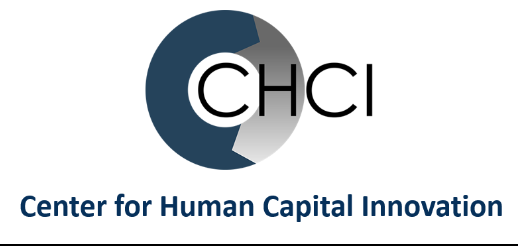
Holiday Cheer, Fewer Fears: A Guide to Today’s Office Party
Office parties have always been equal parts celebration and social experiment. They can connect workers from different parts of the company, deepen trust, heal team rifts, and create memories that make hard work feel worthwhile. Alternatively, they can introduce legal and reputational risk at the speed of an open bar.
Handled well, corporate social events humanize leaders, widen networks, and create a few priceless conversations you’d never get on a status call. Even the Harvard Business Review once argued they can be used strategically to advance your career. In a nutshell, arrive with a plan to meet key people, keep conversations light, and follow up.
Handled poorly, however, they’re an accelerant for reputational harm. Multiple surveys (and countless war stories) highlight alcohol-fueled missteps as the leading cause of “wish-I-could-undo-that” moments. And if employees feel pressure to attend or to drink, it erodes psychological safety and goodwill.
Let’s look at the shift from “Christmas party” to “holiday party,” what’s trending now, and practical advice to design parties that build culture rather than employee-relations case files.
From Santa to secular
For much of the 20th century, organizations in the United States threw “Christmas parties” without much debate. With a workforce made up of many different religious and cultural backgrounds (and the legal obligations that come with it), terminology and design evolved toward, largely non-religious “holiday” or “year-end” events. EEOC guidance under Title VII has long made clear that employers must reasonably accommodate religious beliefs and avoid discrimination. Making a single faith the centerpiece of a celebratory workplace event (even if attendance is not mandatory) is a legal tripwire.
Are organizations “going back” to Christmas parties?
No, not in any broad, evidence-supported way; not in the US at least. In the UK, on the other hand, media still talk cheerfully about “Christmas parties.” But HR and employment-law guidance in the US continues to recommend secular naming and decor to avoid religious discrimination issues and to signal belonging across beliefs. The fashion favors “holiday,” “year-end,” or “winter” framing, with secular symbols and mixed music, over explicitly religious branding.
What’s trending in 2025?
What can you expect to see this holiday season?
- Earlier, shorter, and on the clock Taking the lessons from #MeToo, lavish late-night celebrations have given way to smaller, earlier, and more controlled gatherings. More events are scheduled on Friday afternoons or otherwise during work hours and ending early, which boosts attendance and reduces alcohol-related mishaps and other risks.
- Activity over alcohol From trivia to escape rooms, companies are swapping drink-centered formats for “do-something-together” experiences, in part due to Gen Z’s interest in low- or no-alcohol options.
- Plus-ones and better food. Survey data says permitting a guest helps attendance, and strong catering matters more than booze. It’s important to find out what the team values in an event before planning begins, to ensure people show up.
- Downsized parties Party content has changed, too. The Wall Street Journal reported that organizations are trading big venues for office potlucks and budget-friendly formats.
Risk landscape for companies (the un-festive part)
The risks that can come with a holiday party generally fall into three camps: conduct and harassment, accessibility considerations, and workplace regulations.
Be on your best behavior
When it comes to preventing harassment and other behavioral issues, the first step is to remind everyone that it is still a workplace event and that all anti-harassment policies still apply. Train managers and create a plan in advance to handle complaints.
This is also the time to evaluate if and how alcohol will play a part. If alcohol will be served, consider drink tickets, wine & beer only, non-alcohol options, cut-off times, always-available food and coffee, and ride-share arrangements. Host-liability and negligence laws and precedence will vary by state; remember, plaintiffs’ lawyers don’t take holidays.
Accessible for everyone
To keep celebrations festive and something to look forward to, be considerate and make sure accommodations are in place to allow everyone to enjoy themselves. There are at least 11 religious and secular holidays in the month of December, so it is vital that events don’t single out one faith or carry religious undertones. Additionally, some employees may practice a religion that precludes them from any type of holiday celebration, which is why attendance should always be voluntary. The EEOC’s religious-accommodation guidance is your North Star.
When planning an event, take into account dietary restrictions, such as non-alcoholic drink options for those who abstain from alcohol and food options for those with allergies or religious restrictions. If going off-site, also keep in mind venue accessibility for any employees with disabilities. Don’t let a lack of accessible parking or a non-ADA compliant entrance prevent a team member from participating.
Remember, you’re still at work
Regardless of the end-of-year celebration location, whether in-office or off-site, workplace regulations still apply. This is the time to bring in HR and ensure all laws, rules, and policies are followed.
If non-exempt employees (non-managerial) are required to attend after hours, that time may be compensable, which is another reason to shift parties to work hours and to keep attendance voluntary. There are also workers’ comp and general safety concerns. On or off-site, the company may be responsible for injuries arising “in the course and scope” of employment. Use licensed caterers, mind occupancy limits, and plan transportation.
The bottom line (with a little holiday spirit)
It isn’t necessary to cancel your party or signal “no fun allowed.” The best events are like a warm thank-you note that makes everyone on your team feel welcome, respected, and valued. Keep the focus on appreciation, schedule when people can attend, feed them well, and protect the organizational culture you’ve spent all year building. If you do, your holiday party will pay dividends in trust, retention, and momentum long after the decorations are down.
What is your favorite thing to do for an end-of-year celebration? Tell us your best cautionary tale of something that went wrong at a holiday party.
Leave a comment below, send us an email, or follow us on LinkedIn.


Leave A Comment